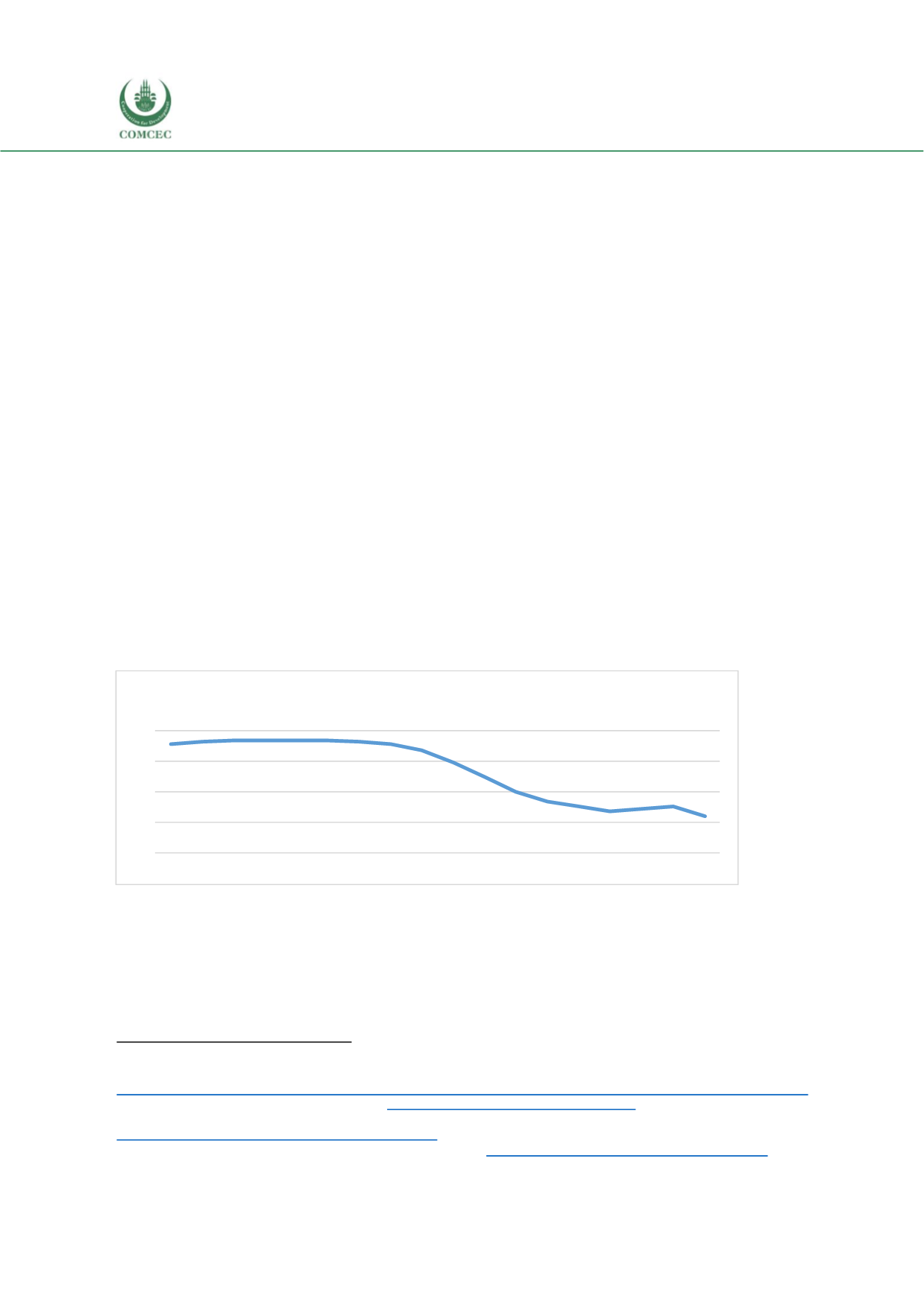

Increasing the Resilience of the Food Systems
In Islamic States in Face of Future Food Crises
98
of October 1997, which continued until December 2003. During this period, four different
presidents implemented a number of economic reforms, with mixed results. Economic reform
in the period after the crisis wasmainly driven by the IMF , as a requirement for their assistance.
The IMF requires a structural reform agenda, a number of steps towards macroeconomic
stabilization, and improvements in the health of the financial system. This included the
elimination all forms of monopoly and government subsidies for industries that were
considered not economically feasible. Subsidies were slowly shifted towards food
commodities.
404
With these programs, the rate of inflation was reduced to 2.01% and slowly
increased the purchasing power of food by the community.
About 19.4 million (7.49%)
405
Indonesian people are currently unable to meet their daily
nutritional needs. Government programs—such as rice subsidies for the poor and direct cash
transfers, among others—have helped the poor meet their food needs. According to a Gajah
Mada University study, the most significant drivers of food insecurity are the price of energy,
agricultural land area (rice, corn, soybeans), chicken and meat production, and populati on
density.
406
These factors have their own macro transmissions, because consumption carried out
by the community is largely influenced by the rate of consumer price indexes that affect the
ability of the public to buy food. Indonesia has never experienced extreme food shortages, but
there are still many cases of malnutrition. Therefore, FAO does not have data on the prevalence
of adults experiencing hunger; FAOdata on the prevalence of Indonesian adultswhoexperience
undernourishment is presented in the following chart
407
:
Figure 25: Indonesia - Prevalence of Undernourishment (%)
Source: FAO (2017)
404
Haryo Aswicahyono and David Christian.“Perjalanan Reformasi Ekonomi Indonesia 1997-2016.” CSISWorking Paper
Series.
https://www.csis.or.id/uploads/attachments/post/2019/01/10/perjalanan_reformasi_ekonomi_indonesia_1997_2016.pdf405
“World Food Programme – Indonesia.” WF
P. https://www1.wfp.org/countries/indonesia406
“Determinant Factors of Food Security in Indonesia.” Agro Ekonomi. Vol 28 (No 2). Dec 2017. pp. 205-19.
https://jurnal.ugm.ac.id/jae/article/view/26245/19506407
“Sustainable Development Goals – Indicators.” United Nation
s. https://unstats.un.org/sdgs/indicators/database/0
5
10
15
20
2000 2001 2002 2003 2004 2005 2006 2007 2008 2009 2010 2011 2012 2013 2014 2015 2016 2017
Prevalence of undernourishment (%)
















